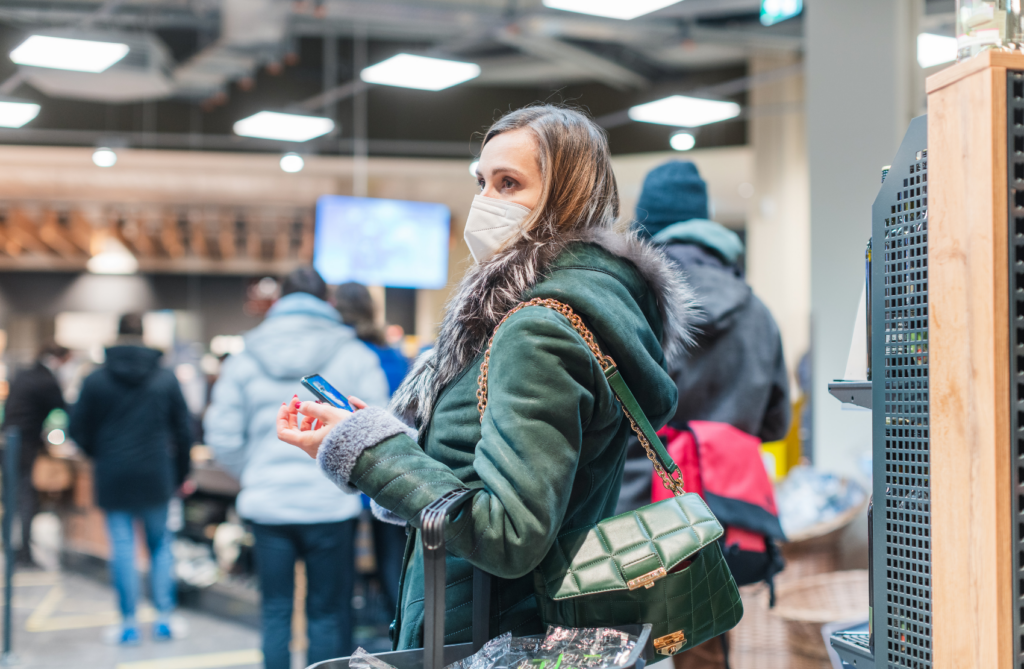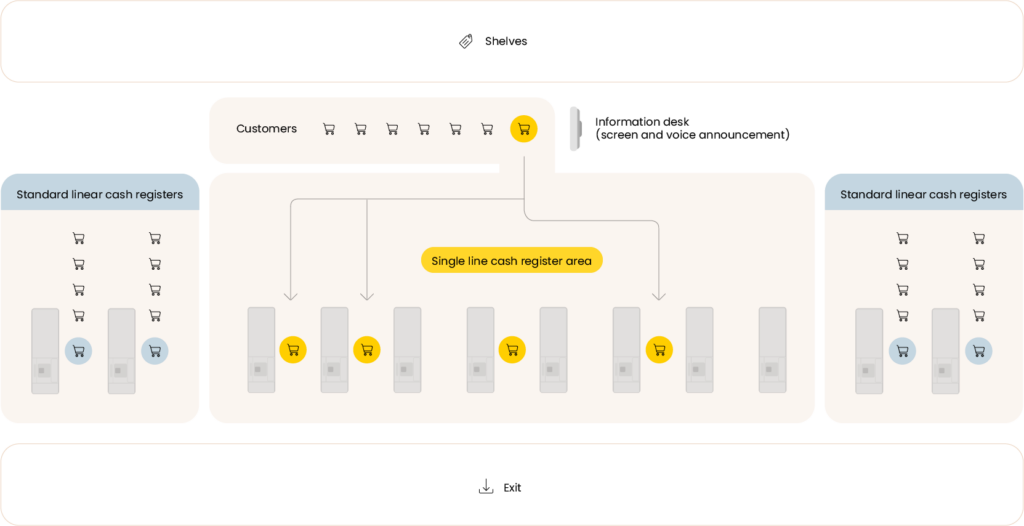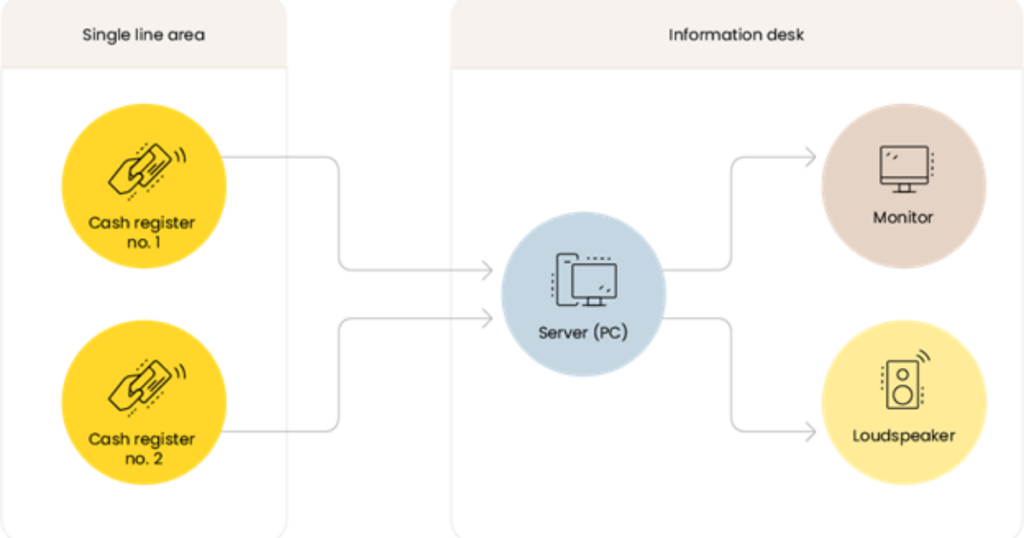Single Line Queuing System helps manage customer traffic to checkout counters

According to consumer’s surveys, when they have to wait in line for long periods, 11% abandon their purchases, 23% discard less needed items from their basket and move to a self-service checkout and as many as the third move to online shopping. According to another study, consumers show high levels of irritation when the queue at the supermarket is not visibly organised. They then start to get frustrated because they are unsure whether the order of service is being followed and how long it will take them to leave the shop with their purchases. A good solution for retailers to reduce abandonment and impatience is the Single Line Queuing System (SLQS).
In a Single Line Queuing System, a specific number of checkout stations are separated from the checkout line. The area thus created is accessed by a single, shared queue. At the entrance to the area, customers are informed which particular cashier they should go to. This system significantly speeds up customer service and keeps in mind customer experience.
How exactly does the Single Line Queuing work?
The Single Line customer service area is separate from the standard checkout line (although it can, of course, coexist with it). Customers queue up and approach each counter from a single location, keeping everything in order. The customer is informed which cash register to approach at the so-called information desk, which consists of a screen displaying a visual message and a loudspeaker transmitting a voice message.

All segregated cash registers are connected to the information desk and report their availability status to it (notification if they are available, busy or out of service). By default, the system automatically reports the availability of the cashier if the current transaction has reached the summary stage. However, each checkout counter has the option to manually report that it is ready to serve the next customer. If the customer does not appear at the cash desk, the cashier has the option to press a dedicated button and repeat the call to the cash desk. There are no more than two customers at any one counter, one of whom will usually have already paid for his or her purchases, while the other is placing items from the shopping basket.
Two modes of information desk
The information desk can operate in two modes – direction and information mode. In the directing mode the post presents on the screen the number of the first available cashier, also indicating the direction (right, left, opposite) and emitting a voice message. After the presentation is completed, the system enters the information mode, during which the numbers of available desks are displayed, or a notification is given that the desks are occupied or out of service.

Personalisation options
The Single Line Queuing System can be customised to suit individual preferences. It is possible to configure:
- the moment of notification about the availability of checkouts (for each checkout can be set independently);
- the topography of system elements in relation to each other (allowing to direct the customer in the right direction);
- length of presentation of information about the available checkout stands;
- priority for signals (e.g. manual notification of availability versus system);
- inactivity time, after which an occupied position becomes eligible for the pool of available positions;
- the interval at which information mode voice messages are broadcast;
- switching off (completely) of voice messages in information mode;
- the time after which the cash register is regarded as having been disconnected from the system (in the absence of any communication).
Benefits of implementing Single Line Queuing System
The benefits of implementing the Single Line Queuing System are both for the customers and the shop where the system has been implemented. As far as customers are concerned, the Single Line Queuing System significantly speeds up their flow to the checkout, even by several dozen per cent. This (together with the orderly queue) reduces their frustration and dissatisfaction, and thus prevents them from quitting shopping. What is more, it increases the customer experience, which will have an impact on the customers’ opinion of the shop.
Reducing the number of people who give up shopping means an increase in revenue for the shop. The introduction of the Single Line Queuing System also increases the number of transactions. According to a test carried out at one retailer, the percentage of time spent on average increases by 23%. This also results in a significant reduction in the period of inactivity at the checkout desk. Impulse purchases will also have an impact on revenue growth – thanks to the display of goods in the place where customers gather. On the other hand, full automation of the system allows for a reduction in service costs. The staff will be assigned to other activities, which will increase their efficiency.
If you have any questions regarding Single Line Queuing System, please do not hesitate to contact us.

